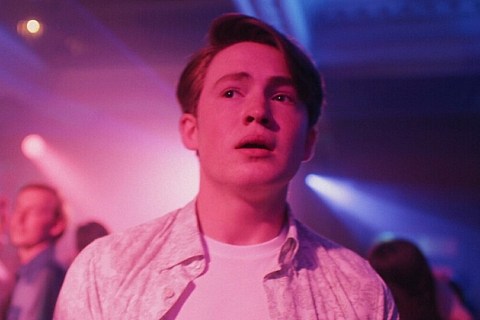Graphic by: Jose Gonzalez-Campelo
The University of Houston has never been a complete institution without its iconic symbols, including the mighty cougar Shasta. Since the beginning, UH has been associated with the cougar, accompanying students throughout their journey to graduation, sports teams as they seek to win championships and remains an integral part of UH culture.
The Beginning
The University of Houston first opened its doors in 1927, with former Washington State Cougars football coach Professor John R. Bender naming the team after his beloved animal. The school newspaper was named The Cougar as Bender loved the grace, power and pride the cougar represented.
The Name
1946 was when the cougar officially became the mascot of UH when the institute expanded into intercollegiate sports. The following year saw the fraternity Alpha Phi Omega raise money to buy a live cougar to be kept on campus, holding a competition to name it.
Of the 226 entries, student Joe Randol won the contest with the suggestion of Shasta, stating, “Shasta (She has to). Shasta have a cage, Shasta have a keeper, Shasta have a winning ball club, Shasta have the best.”
Live Animals
From 1947-89, five live female animals lived on campus and then retired at the Houston Zoo.
Shasta I (1947-62): the longest-living Shasta, she lived on campus, guarded by caretakers known as the Cougar Guard, who took her to the football team’s away games and other activities.
Shasta II (1962-65): She was the first to live in the “Shasta’s Den” cage in Lynn Eusan Park, but retired early due to an apparent wild attitude to the Zoo.
Shasta III (1965-77): known as “The Lady,” she was featured in many commercials for American Motors Corporation. The Cougar Guard called her “Mama” while she was kept at the University until about 1981, when Baby Shasta IV was purchased to replace her as the University thought Mama would die soon, however, she held out for a few more years.
Shasta IV (1977-80): Baby Shasta was purchased as a replacement for Shasta III as a cub, but while she was initially quite easy to handle, she grew so unruly as the Guard slowly left or graduated that they had to retire her early.
Shasta V (1980-89): the last female Shasta, she served until she was euthanized due to kidney failure. Afterward, interim president George Magney ended the tradition of keeping a live mascot on campus, at least entirely until 2012.
Since 2012, live male cougars have been kept at the Houston Zoo for their utmost well-being.
Shasta VI (2012-22): there was much debate surrounding the adoption of a new live animal as many opposed the “inhumane and dangerous” idea. The perfect cougar came in the form of rescue Shasta VI, whom the University adopted in March 2012, six months after his birth and the killing of his mother, while he resided in Washington State.
Shasta VII & Louie (2022-present): the current mascots, the orphaned cougars were adopted by the University after a rancher found them barely surviving on his property in Washington State at a mere four weeks of age. They can be visited by students at the Houston Zoo.
Costumed Mascot
To replace the live mascot, a costume was issued instead for games and other events. This was the first time Shasta was presented as a male, and later on Sasha, his female counterpart, joined him. Students were perplexed as Shasta was already female for most of UH history, but now they are represented together as a male-female pair.
Oregon Duck incident
During the 2007 football season opener game between Houston and Oregon, the Duck mascot attacked Shasta as he was performing the traditional game push-ups. The Cougar pushed away the Duck but was again attacked with a punch to the face and sexual gestures on top. The Duck was suspended from the next game, but no further information about disciplinary action has been reported.
Traditions with the Mascots
Football Games: Shasta and Sasha perform pushups after each time the team scores, totaling the number of points. For example, if the team scores a touchdown to add to a total of 17 points, they will do 17 pushups.
Guarding of the Rings: at the end of the Fall and Spring semesters, ring-recipient students will witness their rings guarded inside the cougar habitat in the Houston Zoo as the residing cougar(s) “bless” the UH-themed box, preparing them spiritually for the Ring Ceremony.
Rubbing the Paw: a statue of Shasta I stands at Gate 2 of TDECU Stadium telling the story of the Cougar Hand Symbol. Coogs rub her extended right paw for good luck before entering the stadium. They also rub the paws of the cougar statues in Cullen Family Plaza for luck and good tidings during Homecoming and final exams.
Hand Symbol: The initial symbol of UH was a V for victory until a fated match against the bitter rival the University of Texas Longhorns in 1953 changed that.
During Shasta’s transport to Austin, one of her fingers was severed when the cage door closed on it. When the Longhorn students learned of this incident, they mocked her by placing their ring fingers over their thumbs, especially after they lost 28-7.
After 15 years, the two teams met again, and this time the score drew at 20-20. Students began to use the mockery of a symbol as a fated sign, which was set in stone in 1976 when the Coogs beat the Longhorns 30-0 in the Dad’s Day Massacre, ending their winning streak. It is primarily formed with the right hand and now is the hand gesture of all UH members.





Recent Comments